
















 |
|
 |                |
Information identified as archived is provided for reference, research or recordkeeping purposes. It is not subject to the Government of Canada Web Standards and has not been altered or updated since it was archived. Please "contact us" to request a format other than those available.
| Labour force information Not for release before 7 A.M. E.S.T. Friday, March 10, 2006 Week ending February 18, 2006 Analysis — February 2006 Employment increased by an estimated 25,000 in February as a large gain in part-time more than offset losses in full time. At the same time, the unemployment rate fell by 0.2 percentage points to 6.4%, matching the 30-year low set in November 2005. Over the last year, employment has increased by 275,000 (+1.7%), almost half of which has been in British Columbia and Alberta. In February, Alberta registered its second largest monthly employment gain, causing the unemployment rate to fall to 3.1%, the lowest rate in three decades. February’s increases were driven by hiring in the service industries. Wages in the province continued to rise as employers competed for scarce labour. The unemployment rate also fell in Ontario in February, dropping 0.3 percentage points to 6.2%. While it was added employment that caused Alberta’s unemployment rate to fall, in Ontario, it was the result of fewer people looking for work. The decline in labour force participation in Ontario also affected the national participation rate, which fell in February by 0.2 percentage points to 67.0%. The rate has been on a downward trend since June 2004 when it peaked at 67.7%. The unemployment rate in British Columbia dropped 0.3 percentage points in February to 4.8%, the lowest rate in the last three decades. Much of the downward trend in the province’s unemployment rate is due to a strengthened labour market in the Vancouver area. West continues to boom Employment increased by 25,000 in Alberta in February, driven by gains in business, building and other support services, trade, public administration and ‘other services’. Youths received the lion’s share of February’s added employment, with an increase of 15,000. The unemployment rate in the province dropped as a result of the employment increase, falling to 3.1%, a record-low for the province. Alberta’s red hot economy also spurred hourly wage growth of 6.1% over the past 12 months. This is well ahead of the 3.3% hourly wage growth at the Canada-level and the most recent year-over-year increase of 2.8% in the national Consumer Price Index. In both British Columbia and Alberta, employment has grown by 3.5% in the last year, double the national rate of employment growth. Although employment decreased by 17,000 in February in Ontario, the unemployment rate fell to 6.2%, mainly due to a large drop in the number of youths looking for work. Employment in manufacturing edged up in February, following large losses in January. Manufacturing employment in Ontario has declined by 81,000 since the end of 2002. However, as the manufacturing industry adjusts to a rise in the Canadian dollar and other factors, other industries in the provincial economy have added workers at a steady clip. Over the previous twelve months, for example, education was up over 13.2%, while construction employment was 11.8% higher. Overall, employment in Ontario in February was 88,000 (+1.4%) above from a year earlier. In February, employment in Newfoundland and Labrador increased by 6,000 pushing the unemployment rate down by 1.4 percentage points to 15.1%. The largest increases in employment came from hiring in natural resources and professional, scientific and technical services. With this month’s increase, employment is up 0.8% from 12 months ago. Youth labour market gaining strength Despite little employment growth throughout 2004 and the first three quarters of 2005, the youth job market has strengthened in the last five months. In February, youth employment was up 14,000, bringing gains since September 2005 to 67,000 (+2.7%). The youth unemployment rate declined by 1.0 percentage point to 11.4% in February. Employment among adult women (aged 25 and over) was unchanged in February, as an increase in part-time employment offset a similar decrease in full time. Despite this month’s part-time gain, employment growth among adult women over the last year has been driven by strength in full time. More hiring in trade Employment in trade increased by 25,000 in February buoyed by hiring in the wholesaling of machinery and equipment as well as personal and household goods. Overall, employment in trade has increased 3.0% from a year ago. Construction employment was up 14,000 in February, continuing its upward trend. Compared to a year ago, employment in the industry has grown by 8.9% (+87,000). Nationally, manufacturing employment was little changed in February. Although there have been major declines since the end of 2002 (-177,000 or -7.6%), this pales in comparison to the severe contraction (-329,000 or -15.3%) experienced over the same period of time during the early 1990s. Employment in public administration fell by 20,000 in February, almost entirely at the federal level and across most provinces. Employment in the industry had increased as a result of temporary hiring for the most recent federal election. Natural resources employment fell by 8,000 in February, driven entirely by declines in mining. Nevertheless, employment in the industry is still 3.3% above its level from a year ago, due to strength from oil and gas in Alberta.
Chart 2
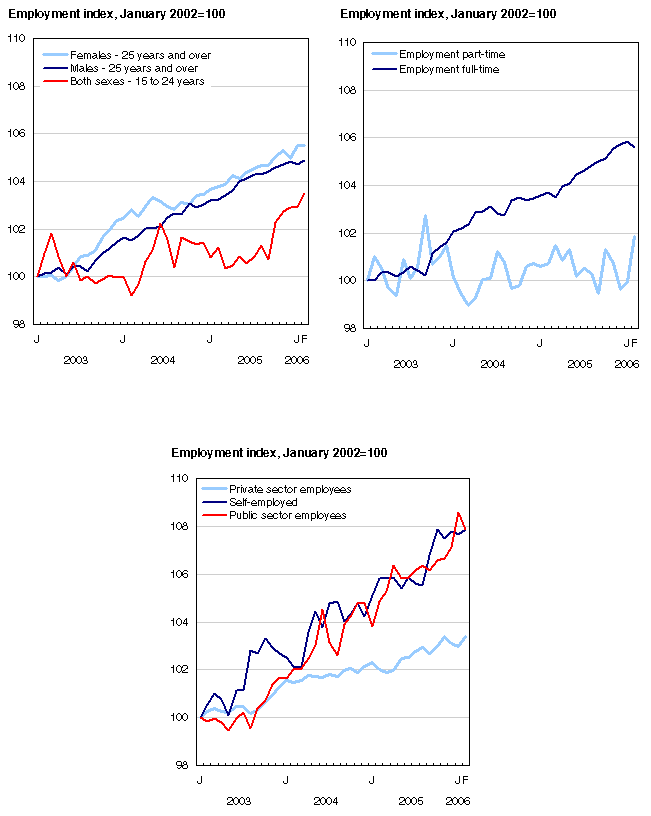
Chart 3
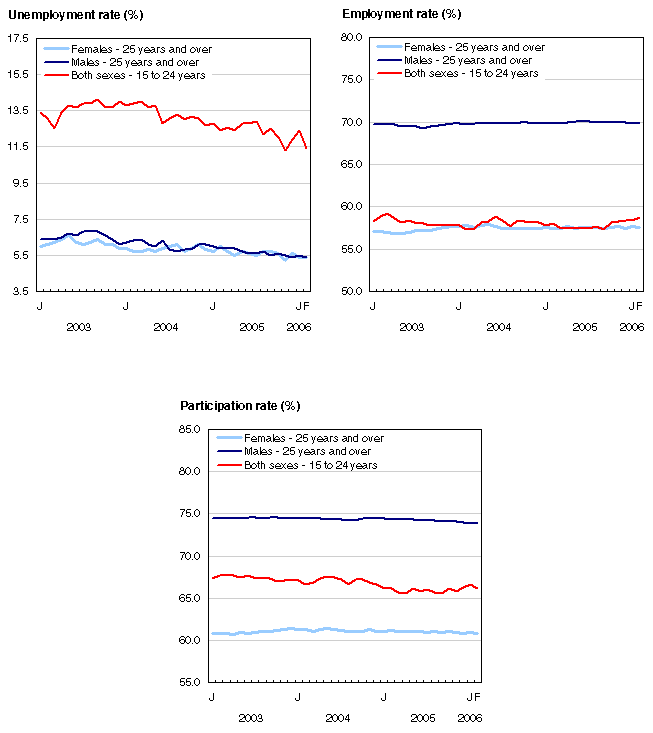
Chart 4
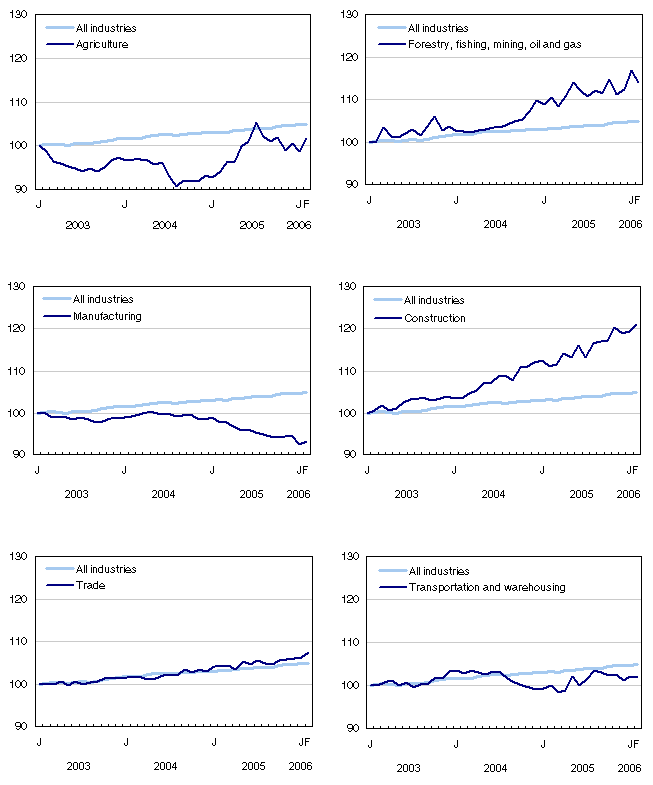
Chart 5
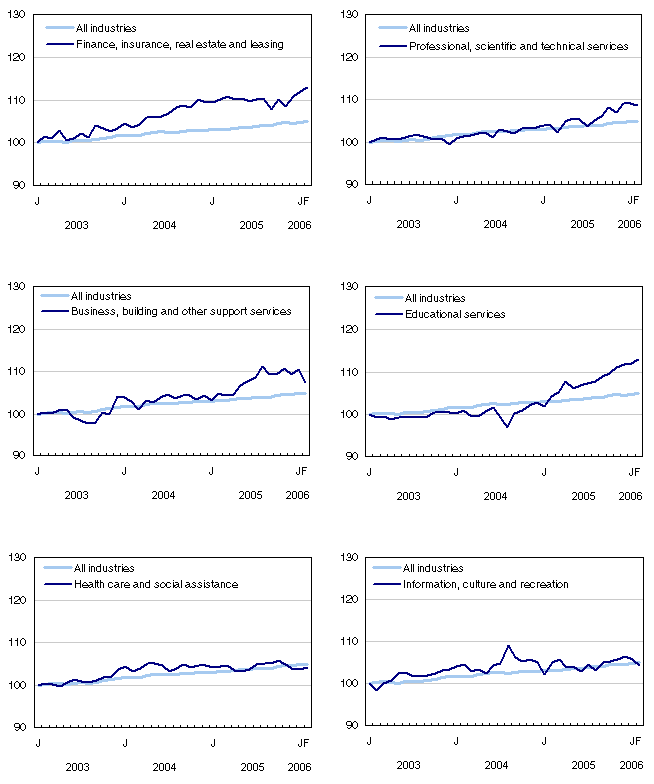
Chart 6
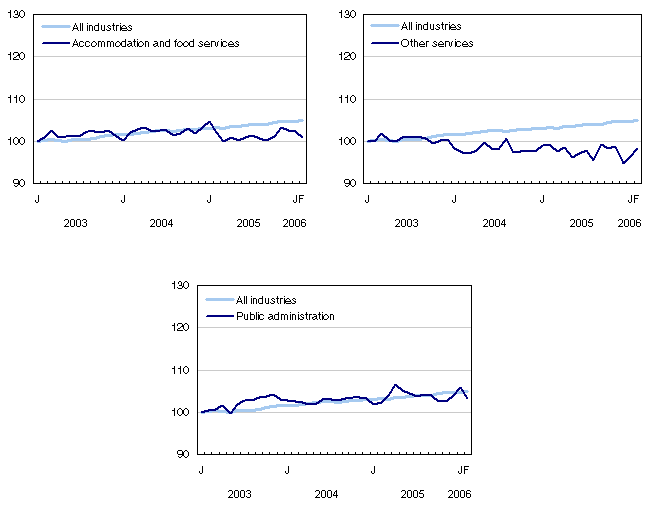
Chart 7
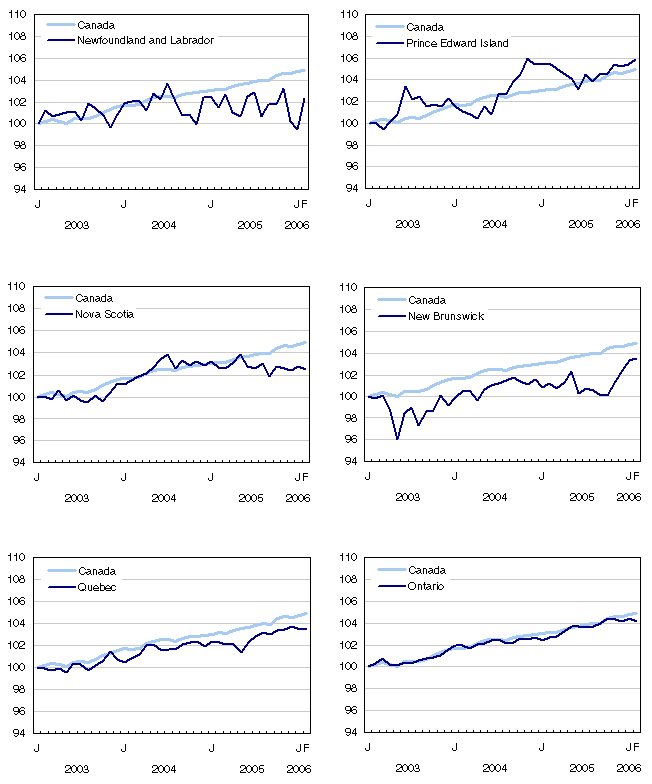
Chart 8
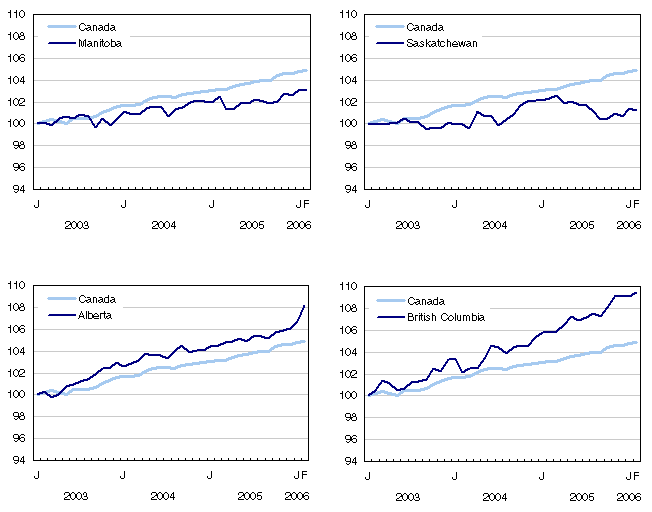
|
|
|
|